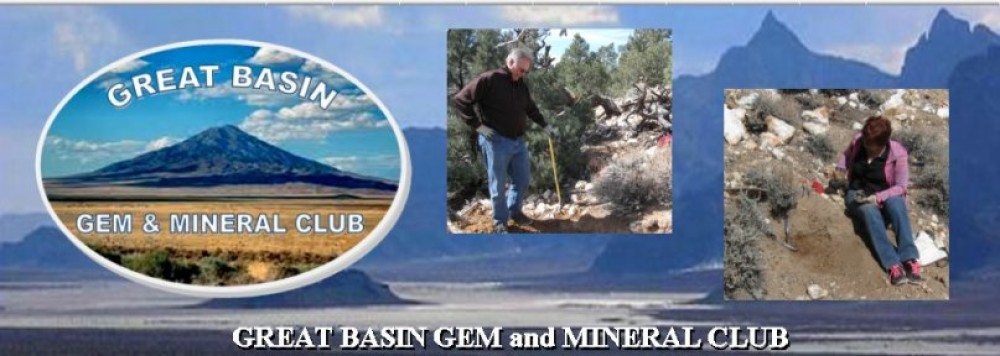Mohs Scale of Mineral Hardness
Once you have identified your sample you can proceed accordingly. If you have identified your specimen as a ‘mineral’ you should look for the mineral’s transparency. If you can see through the specimen, it is transparent. If light can pass through, but the specimen cannot be seen through, your mineral is translucent. Minerals that do not let light through are called opaque. The relative hardness of minerals is determined according to Mohs Scale, named after the German mineralogist, Friedrich Mohs (1773-1839), who devised it in 1812. In the original Mohs Scale, ten minerals were arranged in order of increasing hardness and were assigned the numbers one to ten. These ten minerals are shown in the first column of the table below:
Hardness Mineral Associations and Uses
1 Talc (Softest) Talcum powder. (Can be scratched by a fingernail.)
2 Gypsum Gypsum is formed when seawater evaporates from the Earth’s surface. (Can be scratched by a fingernail or by a real copper penny.)
3 Calcite Limestone and most shells contain calcite. (Can be scratched by a steel knife blade or sometimes a copper coin. Will scratch a fingernail; may scratch a copper coin and gypsum.)
4 Fluorite Fluorine in fluorite prevents tooth decay. (Can be scratched by a steel knife blade or window glass. Will scratch a fingernail and a real copper coin.)
5 Apatite When you are hungry you have a big “appetite”. (Can be scratched by a steel pocket knife. Will scratch a real copper coin and softer minerals 1-3.)
6 Orthoclase Orthoclase is a feldspar. (Will not scratch glass but will scratch steel blades, copper coins and softer minerals 1-5.)
7 Quartz (Will scratch glass, steel blades and softer minerals 1-6)
8 Topaz Emerald and aquamarine are varieties of beryl with a hardness of 8. (Will scratch glass and steel blades. Can be scratched by a hardened file)
9 Corundum Sapphire and ruby are varieties of corundum. Twice as hard as topaz. (Will scratch glass, steel blades and all softer minerals 1-8.)
10 Diamond (hardest) Used in jewelry and cutting tools. Four times as hard as corundum. (Will scratch all of the softer minerals.)
More on Field Testing for Hardness
A substance with a higher Mohs number is capable of scratching a substance with a lower number.
Mohs selected these ten minerals because they were common or readily available. The scale is not a linear one, and is somewhat arbitrary. For example, Fluorite at four is not twice as hard as Gypsum at two; nor is the difference between Calcite and Fluorite similar to the difference between Corundum and Diamond.
Hardness is used in a rough way to inform mineral identification in the field. Real minerals out in the field can look remarkably alike. This may be due to weathering, variations in their chemical structure from the ideal, or clathrate inclusions that simply change the color of the mineral. Sometimes faulting and metamorphism can induce facets and planes in a mineral that aren’t natural to it, so that the mineral looks like another.
On each level of the scale a mineral can be scratched by something of the same or higher level, but nothing lower. Test your mineral specimen by trying to scratch it with your fingernail. If it doesn’t scratch, next try a copper penny. If you are able to scratch your specimen with the penny but not with your fingernail, it has a hardness between 2.5 and 3.5. If the specimen does not scratch with a penny, try a knife blade or glass. A diamond can only be scratched by another diamond.
One last test that is commonly used is called a streak test. A mineral’s “streak,” or color when it is finely powdered, is always the same, even when the color of the mineral varies. (The color of the streak can be very different from the color of the mineral itself.) Rub your specimen across a piece of porcelain tile (a “streak plate”) and examine the color it leaves behind. Once you have performed your tests, compare your results with a Rocks and Minerals field guide to come to a final identification of your specimen.
The Extended Mohs Scale
The Mohs scale is still used today although it has been extended, putting diamond at 15, to accommodate newly-developed materials of extreme hardness which lie between 10 and 15.
Mohs Substance Hardness
Liquid 1
Gypsum 2
Calcite 3
Fluorite 4
Apatite 5
Orthoclase 6
Vitreous pure silica 7
Quartz 8
Topaz 9
Garnet 10
Fused zirconia 11
Fused alumina 12
Silicon carbide 13
Boron carbide 14
Diamond 15
